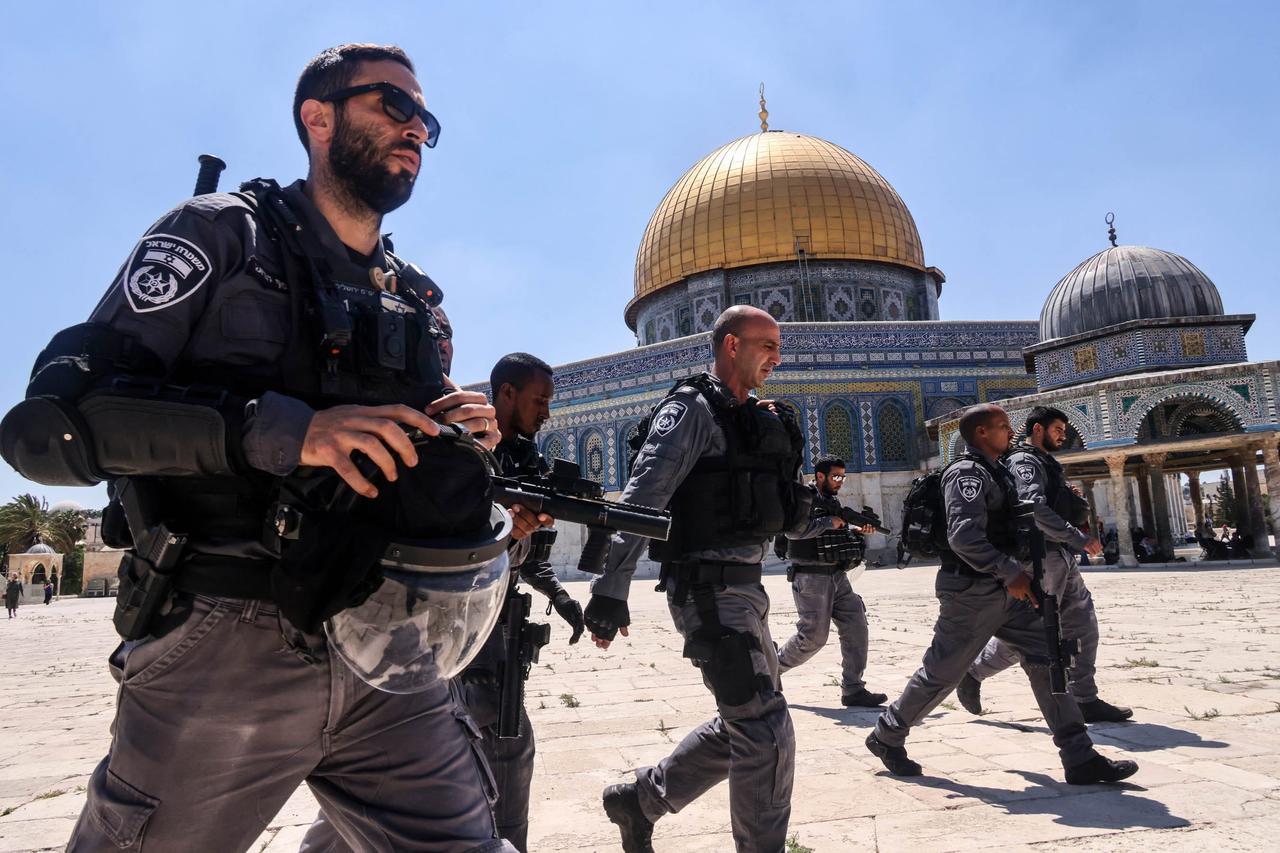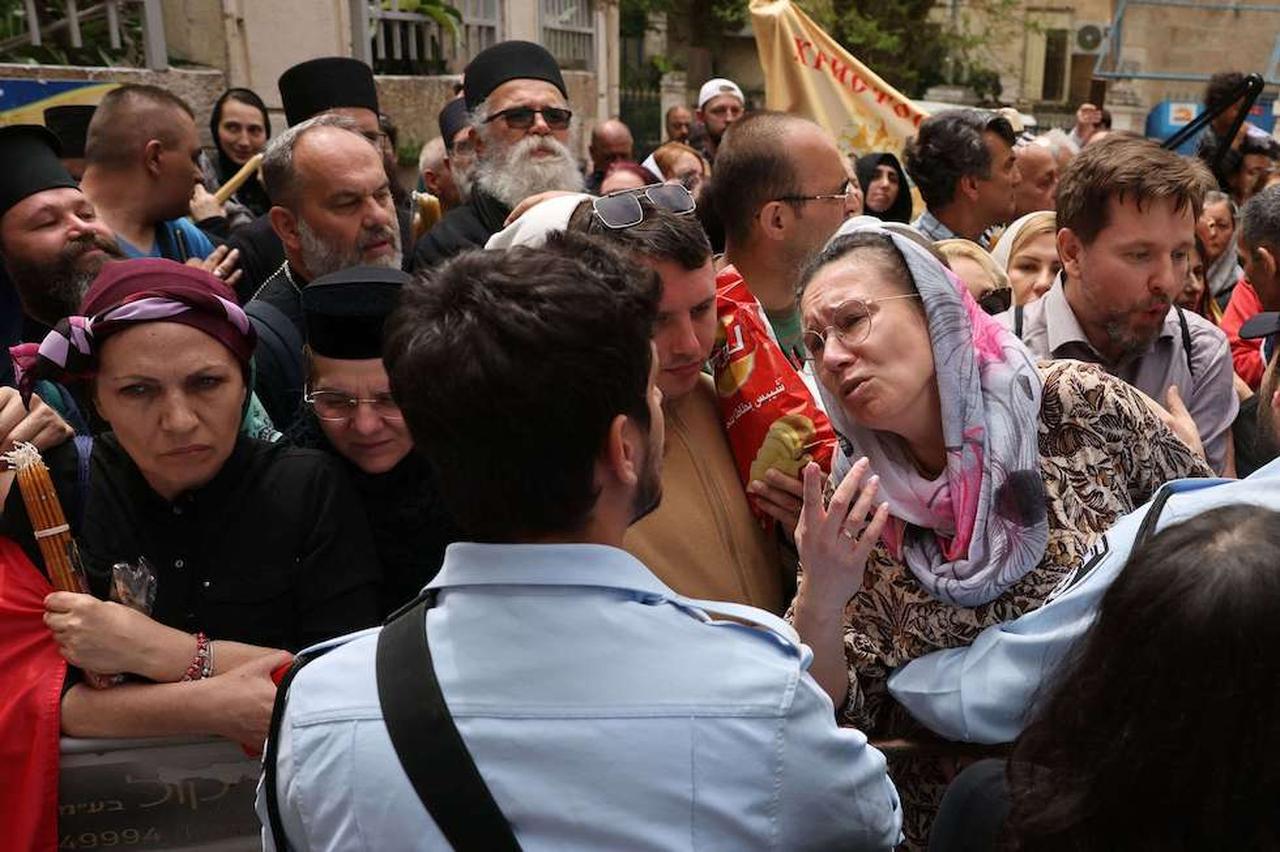
During the conflict that broke out on June 13 following Israel’s attacks on Iran and ended with a cease-fire on June 24, Israeli authorities significantly tightened restrictions on Palestinians in occupied East Jerusalem.
Local leaders and planning experts described the measures as discriminatory and unprecedented, adding to growing concerns of forced displacement in the area.
As regional attention focused on the military escalation with Iran, Israel enforced strict limitations in East Jerusalem, particularly in the Old City. Entry was largely restricted to local residents between June 13 and 24, turning the usually bustling area into a ghost town.
Authorities also closed access to Al-Aqsa Mosque, allowing only Muslim volunteers known as "murabits" and employees of the Islamic Waqf to enter.

The Church of the Holy Sepulchre, another major religious site, faced similar access restrictions during this period. These moves followed a broader pattern of escalating control measures since Oct. 7, 2023, which included intensified raids in the West Bank and intensified assaults in Gaza.
Sheikh Ikrime Sabri, the Imam of Al-Aqsa Mosque, said Israel used the Iran conflict as an excuse to block access to one of Islam’s holiest sites.
“Israel started a war with Iran and used it to restrict worship at Al-Aqsa, preventing hundreds of thousands of people from praying,” he stated. Sabri described the restrictions as part of Israel’s broader ambition to assert control over Al-Aqsa and undermine the authority of the Islamic Waqf.
He added that the increase in restrictions and the obstruction of access to worshippers during this period was “deeply concerning and unacceptable.”
Alongside access restrictions, Israeli authorities barred Palestinian shopkeepers in the Old City from opening their businesses, citing a lack of access to bomb shelters. Those who defied the order were reportedly threatened with a fine of 5,000 shekels (around $1,435). In contrast, Israeli businesses in West Jerusalem were allowed to operate without shelter access.
Ziyad el-Hamuri, director of the Jerusalem Center for Economic and Social Rights, said the restrictions affected around 35,000 Palestinians in the Old City and aimed to drive them out of the area. He noted that many shops remained closed for nearly two weeks, causing economic damage and pushing Palestinians to leave.

The issue also highlighted deep inequalities in civil infrastructure. While Palestinians in East Jerusalem were barred from working due to a lack of shelters, reports revealed that the majority of public shelters are located in Israeli areas. According to the Association for Civil Rights in Israel (ACRI), only about 10% of shelters in Jerusalem are in Palestinian neighborhoods, leaving nearly 400,000 residents at risk during attacks.
Planning expert Michal Braier said roughly 28% of the Israeli population lacks access to shelters, but this figure rises to more than 50% among Arab communities. She noted particularly dire conditions in the southern Negev region, where public shelters are scarce.
Braier emphasized that the distinction between East and West Jerusalem reflects ethnic divisions more than geography. While Palestinian neighborhoods reportedly have only around 60 shelters in total, Jewish neighborhoods in West Jerusalem are equipped with hundreds. She also pointed out that most Palestinian homes in East Jerusalem lack building permits due to Israeli restrictions, preventing infrastructure improvements.
“The Arab citizens of Israel have faced systemic discrimination for decades. First their land was seized, then their communities were left out of development plans,” Braier said.